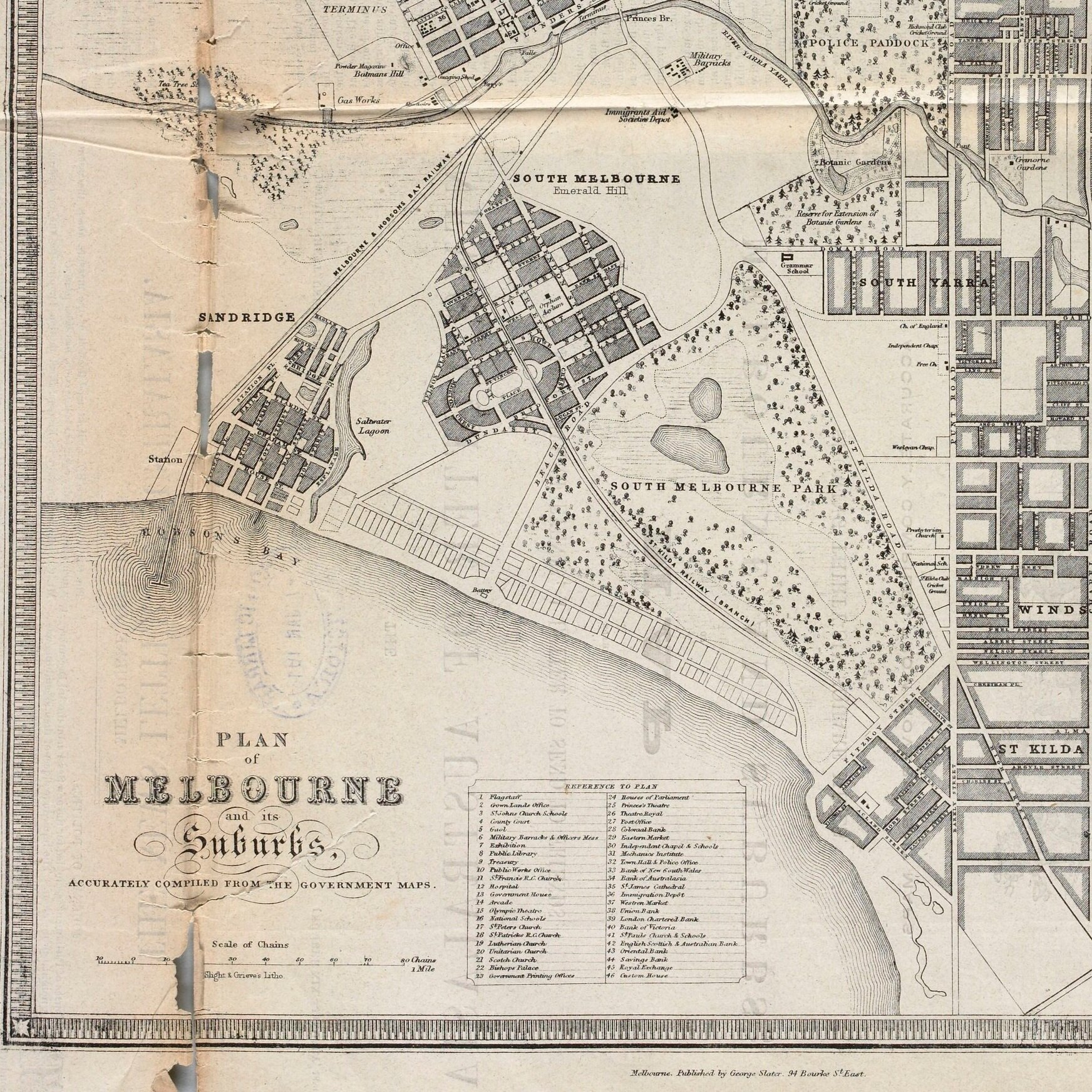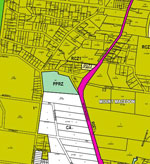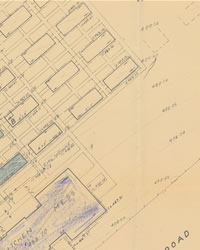Heritage
Heritage encompasses our inherited traditions, places, objects and culture. The cultural heritage of a place is embodied within its built fabric, surroundings, historic use and the various meanings, memories and stories it represents.
Way Back When works closely with heritage consultants and local councils to prepare site histories, thematic environmental histories, heritage assessments and cultural heritage management plans. We provide community engagement services to ensure that key stakeholders and community members are connected to the unique heritage of their local area, and that they have a voice in the understanding and management of local heritage.
We also run regular workshops on how to research homes and other properties, and provide property history services to individuals and families.
Glen Eira Heritage Interpretation Planning Project
Way Back When worked with the City of Glen Eira on a project to review existing heritage interpretation in the municipality and develop a report recommending specific stories and themes suitable for future interpretation within the City of Glen Eira.
Plan of Melbourne and its suburbs, 1858. State Library Victoria
A history of LGBTIQ+ Victoria in 100 Places and Objects
In March 2021 Heritage Victoria published A History of LGBTIQ+ Victoria in 100 Places and Objects, which it had commissioned from the Australian Queer Archives (AQuA). AQuA in turn commissioned Way Back When to bring the report together in the final phase of the project. Way Back When worked with AQuA to determine the final structure of the report, write an introduction, and collate and edited the text. The result is an accessible and pioneering report – the first of its kind in Australia – that identifies 100 places, objects and collections that have special meaning to Victoria’s contemporary queer communities.
City of Port Phillip Thematic Environmental History
The City of Port Phillip is undertaking a strategic heritage program to review and update the Port Phillip Heritage Review (PPHR), which was completed in 1998. Way Back When worked with the City of Port Phillip on a comprehensive review of the PPHR. A proposed new thematic framework was developed and tested through extensive community consultation, and completed in May 2019. Way Back When then collaborated with the Boon Wurrung Land and Sea Council to prepare a new Thematic Environmental History based on the approved framework. This was completed in 2020 and provides the City of Port Phillip with a framework to identify places, landscapes, buildings, sites, and events, to give a greater understanding of a historic pattern of growth, development and change in the area.
Eureka Centre Thematic Framework
This project involved Way Back When creating a thematic framework for the interpretation of the newly rebranded Eureka Centre and Gardens in Ballarat. This is the first step in the City of Ballarat’s commitment to preparing an integrated Interpretation Plan for the facility and the surrounding site. Consultation with the community and stakeholders is a key component of the project.
Bundoora Homestead Arts Centre Heritage Trail
The Bundoora Homestead became a community arts centre in 2001 after the local community saved it from destruction. Built on the traditional lands of the Wurundjeri people, the magnificent homestead was built by the Smith family in 1899. From 1920 until 1993, it was used as a repatriation hospital for returned soldiers who required care due to the psychological impacts of their war experiences. It was the place where Dr John Cade discovered lithium as an effective treatment for bipolar disorder, which revolutionised mental health treatments around the world. In 2018 Way Back When created a heritage trail that sits inside the homestead and allows visitors to explore the history of the Smith family and the repatriation hospital. To accompany the heritage trail, we also created two education kits for school children aged 7 to 12 years.
City of Port Phillip Heritage Recognition Program
Way Back When has worked with the City of Port Phillip researching and writing text for heritage plaques for sites selected as part of the municipality’s Heritage Recognition Program. The sites encompass the areas of Sandridge, South Melbourne, Albert Park, Balaclava, Elwood, Montague, St Kilda and Port Melbourne.
Chasing Buckley’s Way: Exploring the Northern Bellarine Masterplan
Way Back When was engaged by Tourism Greater Geelong and The Bellarine to develop a masterplan proposal for an interpretive heritage trail along the Bellarine coast. It involved research into the history of the area and existing tourist and heritage experiences, as well as community consultation. This was all synthesised into the final report. ‘Chasing Buckley’s Way: Exploring the Northern Bellarine’ is a masterplan for an engaging and interactive experience-based trail between Portarlington and St Leonards, showcasing the natural landscape, indigenous flora and fauna and exploring local stories of identity, cultural heritage, local industry and tourist attractions.
The Royal Children's Hospital Significance Assessment and Collection Policy Development
After undertaking a Heritage Interpretation Strategy and plan in 2015 with Context and Way Back When, The Royal Children’s Hospital is moving towards implementing some of the recommendations made in the final document. The first of these is a Significance Assessment and Collection Policy Development. Way Back When worked with Context on this project, delving into the remarkable collection, assessing its significance and working with the hospital to develop policies that will enable greater access.
The Royal Children’s Hospital Strategic Heritage Interpretation
Way Back When was part of a team of consultants, including historians, heritage specialists and visual communication and graphic designers, that undertook a project to explore the history and heritage of the Royal Children’s Hospital. As a team we developed a strategic framework that will guide the hospital’s approach to celebrating and communicating its history over the next decade, including the hospital’s 150th anniversary in 2020. Our role as project historians was to research the hospital’s history through an exploration of its tangible and intangible heritage and produce a rich narrative of the hospital’s history and heritage themes.
Thematic History of Public Housing in Victoria
The history of public housing in Victoria stretches back to early last century. For many, public housing evokes images of high-rise apartments and large blocks of flats. However, public housing and its history is about much more. Along with heritage and environment consultants, Context, Way Back When researched and wrote a thematic history of public housing in Victoria.
Migration Heritage Study
This project was commissioned by Heritage Victoria to develop a framework for assessing places and objects of significance to post World War Two migrants and migrant communities in Victoria. Way Back When worked as a part of a project team led by Context on the preparation of a thematic history, which involved detailed research into Victoria's built heritage and comprehensive analysis of immigration policy in Victoria and Australia in the post war period.
Cultural Heritage Management Plans and site histories
Way Back When has worked closely with Andrew Long & Associates on some 40 Cultural Heritage Management Plans and site histories, focussing on post contact land use of specific localities including sites in Frankston, Cranbourne, Shaw River, Keysborough, Geelong, Ouyen, Chiltern, Wangaratta, Seaspray, Tootgarook, Dromana, Rosebud West, Sale, Fitzroy, Brunswick, Mernda, Alphington, Carrum Downs and central Melbourne.
Similar heritage work has been carried out for Lovell Chen – Architects & Heritage Consultants on the site of the Former State Research Farm at Werribee and Olympic and Melbourne Parks, Bacchus Marsh, Malvern and Fitzroy.
Mount Macedon Heritage Assessment
Way Back When worked with architectural firm Woodhead International to compile a historical summary of land at Mount Macedon, as part of a heritage assessment. Incorporating pre and post European contact research, the report includes the main elements of the site's heritage significance and land use.
Argus Building Historical Background Study
The historic Argus building, on the corner of Elizabeth and La Trobe streets, was constructed in 1926 and for 30 years housed one of Melbourne's oldest newspapers. The building is classified by the National Trust and Heritage Victoria and has been the scene of many great events.
Way Back When was employed by La Trobe University to compile a comprehensive history of the site. This research focuses on the occupation and built fabric of the site at various periods and considers events and people that have been linked to the property, in particular its association with one of the nation’s great newspapers that gives this building special significance.
Beersheba Barracks Wangaratta Heritage Maintenance Plan
Way Back When worked as a part of a project team led by architectural and design firm Woodhead International to undertake research into the history of the Beersheba Barracks site in Wangaratta, Victoria. The historical summary that was prepared formed part of a Heritage Maintenance Plan to identify the historical value and significance of the site in order to inform decisions about the site's maintenance and management.
The Beersheba Barracks site is representative of the history of the Army in Wangaratta and, as many of the buildings and sites that tie Wangaratta to its military past no longer exist, the site is highly significant as one of the last remaining symbols of this long association. This research required the use of a range of records in the national archives and state records, as well as consultation with local historical societies, Returned Services League branches and various military museums.







